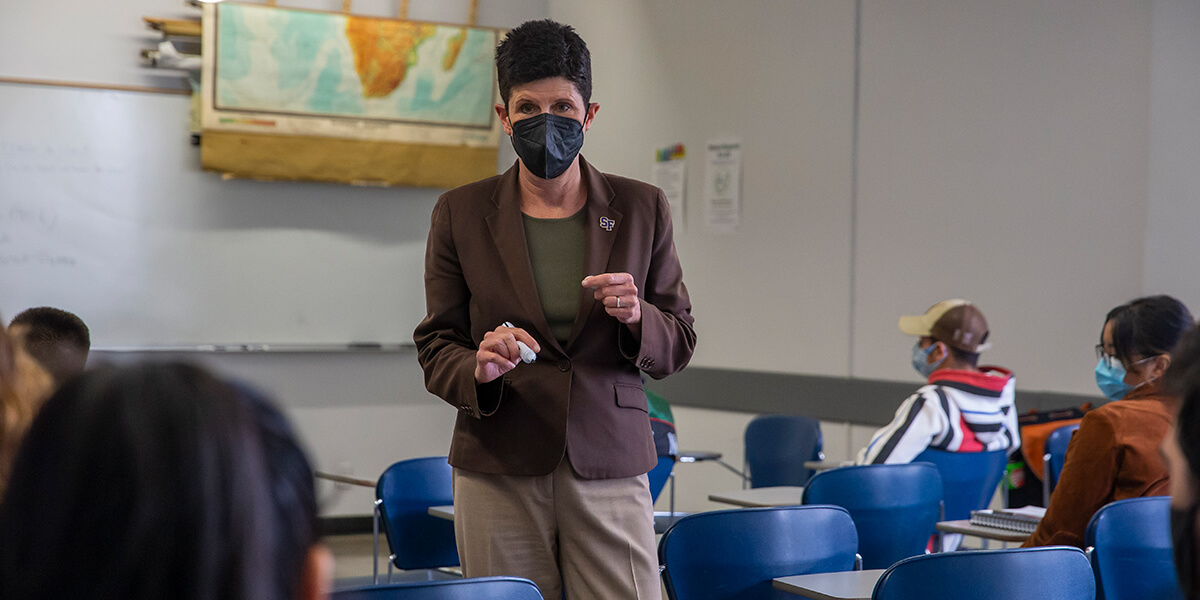
As a former professor of history, San Francisco State University President Lynn Mahoney says one of her greatest joys is teaching. But as one might expect, not many university presidents have the time to step into a classroom and teach a course themselves. In fact, it almost never happens.
This semester, at San Francisco State, it did. President Mahoney has returned to her roots as a professor and is teaching a U.S. history course with an important takeaway: individuals can and do change the world.
“What I love about history is that it’s about people,” said President Mahoney, who taught history as a faculty member at Purchase College, State University of New York. “It’s about their agency, what they can accomplish and what they can do to change the course of history amidst conflicting ideas and conflicts over power.”
With the help of SF State’s Center for Equity and Excellence in Teaching and Learning, President Mahoney is teaching History 120: “History of the U.S. Through Reconstruction.” It’s taught through a hybrid model, which means her 26 students, who are mostly in their first year, meet weekly on Fridays in person (with face coverings) but also learn material online at their own pace.
History 120 focuses on the period between colonization and the post-Civil War Reconstruction era, with an emphasis on tensions between liberty and slavery as well as social movements for change and resistance. In her course, President Mahoney covers the creation and re-creation of a new nation; the emergence of tensions over development, immigration and slavery; the spread and limits of democracy; the causes and consequences of the Civil War; and more. Her goal is that students learn more about this important time in U.S. history, which in turn will help them understand how race, ethnicity, class and gender are historically and culturally constructed by humans over time.
“What I love about history is that it’s about people.” — Lynn Mahoney
President Mahoney also hopes students get a sense that ordinary people can change the world. To illustrate this, she explores the stories of individuals who made a difference without becoming the sort of well-known historical figures most people remember today. “History really is just the stories of a lot of people,” she said. “It explains how we got here and opportunities to do it differently in the future.”
Another approach to her teaching style is focusing less on dates-and-figures memorization and more on substantive discussion. “When I was an undergraduate you had to memorize all sorts of things, and I came to realize nobody actually remembers all of that,” said President Mahoney, who earned her bachelor’s degree in American studies from Stanford University and a Ph.D. in history from Rutgers. “What’s more interesting is getting them to think historically and critically about the content and by extension the present.”
Abby Freyer, who moved from Georgia to attend SF State, is a first-year student in the class. They not only like how the course is discussion-based but also find it “cool” to see this rare moment. “You usually don’t see the president of the school teaching in class,” they said.
Department of History Chair Laura Lisy-Wagner also says this is a unique moment. “Having the president teach a class of first-year students shows how important our students are to us,” Lisy-Wagner said. “She brings a vital perspective as a social historian and as someone who is familiar with the excellence and enthusiasm of CSU students through her time at Cal State LA and Long Beach.”
— Kent Bravo